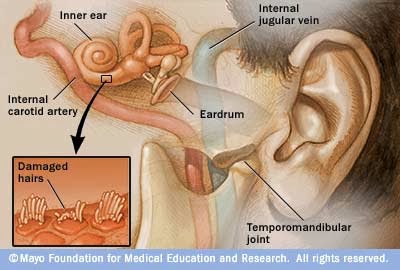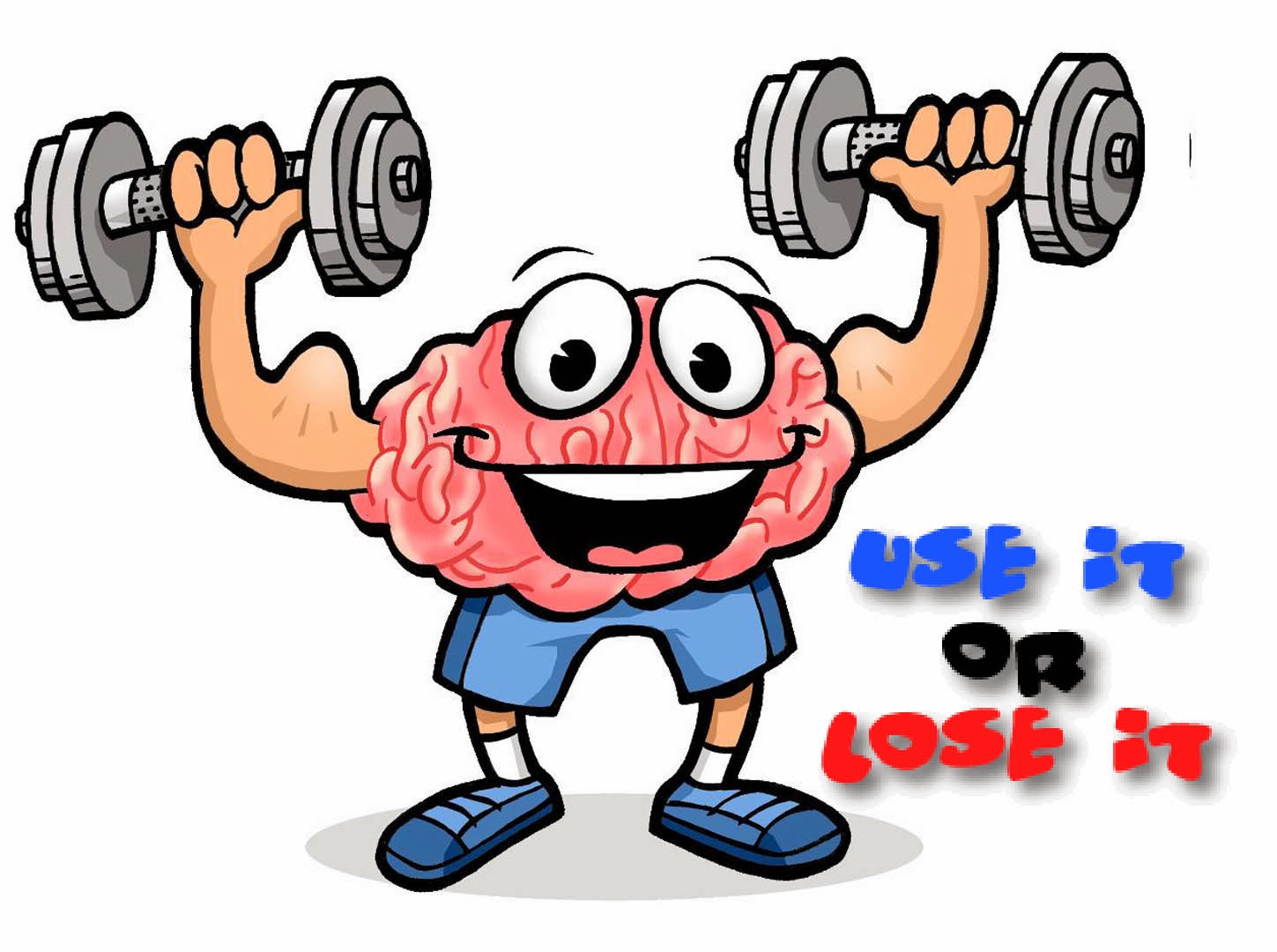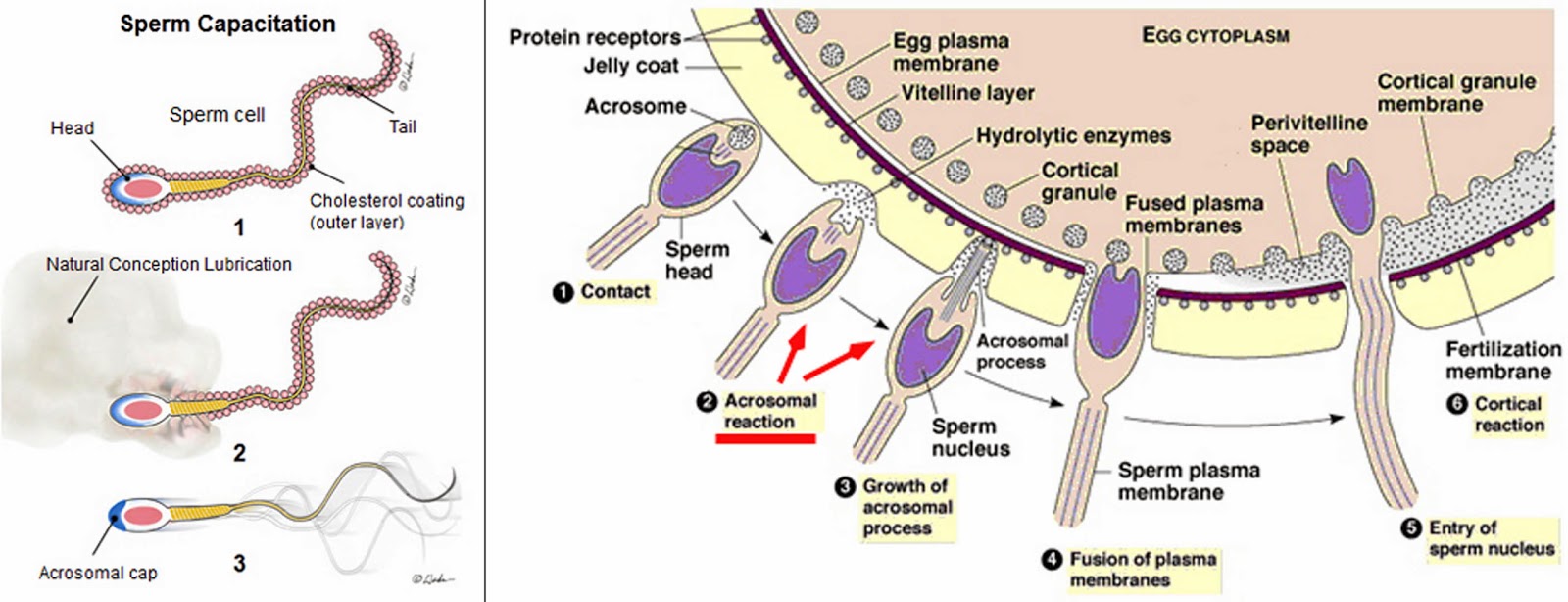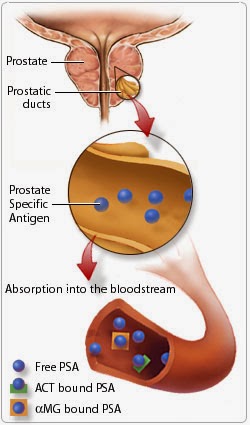Biology
Biology concepts ? cochlear amplification, capsaicin, tinnitus, neural plasticity, long term depression, sperm capacitation, acrosome reaction, apoptosis, reactive oxygen species, cancer
I have never been a fan of the Red Hot Chili Peppers (sometimes known as RHCP). The music is nails on a chalkboard to me, and their bassist is named for a plague-carrying arthropod. But in the interest of fair play, I looked deeper. In late 2013, lead singer Anthony Kiedis and ?Flea? produced a film intended to honor the life of jazz pianist Joe Albany. Add to this that Kiedis acted in an ABC After School Special when he was a teenager, and I now see that the Chili Peppers are more than just bad music.
A 2013 study indicates that TRPV1 is important for the uptake of the drugs into the hair cells, and then they do their damage. An older study shows that even without drugs to be taken up, increased TRPV1 expression is the cause of acoustic injury tinnitus (ringing) and hearing loss. Another paper showed that capsaicin itself blocks the action potential in the outer hair cells and dampens the cochlear amplification system. Why anyone would stick a chili pepper in his ear is beyond me.
TRPV1 acts in LTD. Without TRPV1 activity, all connections could continue to be strengthened, and a ceiling level of excitability would be reached. Then you wouldhave trouble adding new information.
So TRPV1 is important for sperm even before they start their journey. The first thing that happens after the sperm enters the female reproductive tract is that they undergo a process called capacitation. These changes make the sperm ready to bind to the egg. TRPV1 and its agonist anandamide (same as in LTD) are important late in capacitation. They prepare the sperm for transfer of the DNA to the egg.
Cancer
The bad news continues... maybe. Several studies have linked capsaicin to stomach, oral cavity, and gall bladder cancer. One epidemiologic study showed that US counties with higher Mexican American, Cajun, and Creole populations have higher rates of these cancers, and it just so happens that these are the folks that eat more chili peppers. Some skin cancers are also associated with capsaicin. This is a bit disconcerting considering the number of topical capsaicin pain creams on the market.
Lee JH, Park C, Kim SJ, Kim HJ, Oh GS, Shen A, So HS, & Park R (2013). Different uptake of gentamicin through TRPV1 and TRPV4 channels determines cochlear hair cell vulnerability. Experimental & molecular medicine, 45 PMID: 23470714
Amoako AA, Marczylo TH, Marczylo EL, Elson J, Willets JM, Taylor AH, & Konje JC (2013). Anandamide modulates human sperm motility: implications for men with asthenozoospermia and oligoasthenoteratozoospermia. Human reproduction (Oxford, England), 28 (8), 2058-66 PMID: 23697839
Gonzales CB, Kirma NB, De La Chapa JJ, Chen R, Henry MA, Luo S, & Hargreaves KM (2014). Vanilloids induce oral cancer apoptosis independent of TRPV1. Oral oncology PMID: 24434067
Anandakumar P, Kamaraj S, Jagan S, Ramakrishnan G, & Devaki T (2013). Capsaicin provokes apoptosis and restricts benzo(a)pyrene induced lung tumorigenesis in Swiss albino mice. International immunopharmacology, 17 (2), 254-9 PMID: 23747734
- Cold Receptors Come In From The Cold
Biology concepts ? thermosensing, cool sensing, allergy, cross-reactivity, cold allergy, sperm maturation, acrosome reaction, opiate withdrawal You can be allergic to things that touch your skin ? like poison ivy, things injected, like bee venom,...
- Using Pain To Stop Pain
Biology concepts ? desensitization, habituation, counter irritation, cautery, heat sensing, pain, chronic, acute, analgesia Gout usually attacks middle-aged men and the big toe joint is a favorite spot. But it can occur anywhere and in anyone. The...
- Capsaicin ? Adding To Or Taking Your Pain
Biology concepts ? hyperalgesia, allodynia, analgesia, sensitization, potentiation, desensitization, habituation, burning mouth syndrome Apparently this is how people shovel snow in the cold climates. I agree with the form; always bend with your...
- It?s Not Just Chili Peppers That Are Hot
Biology concepts ? cinnamaldehyde, nasal hyperreactivity, piperine, allyl isothiocyanate, eugenol, gingerol, tinyatoxin, osmotic stress, agonist/antagonist The last few years have seen the rise and fall of The Cinnamon Challenge. I can?t tell you why...
- Maybe We Do Taste The Burn
Biology concepts ? capsaicin, TRPV1, heat sensing, thermoregulation, taste, ligand Eating spicy food can seem like having fire in your mouth. Interestingly enough, some people do that. Fire eaters do not use ?cold flames? or anything in their mouths...
Biology
Capsaicin Receptors ? Matters Of Life And Death
Biology concepts ? cochlear amplification, capsaicin, tinnitus, neural plasticity, long term depression, sperm capacitation, acrosome reaction, apoptosis, reactive oxygen species, cancer
 |
| On the left are the Red Hot Chili Peppers. I am most interested in the member on the right ? Flea. Acknowledged as the second best rock bassist of all time (right behind John Entwhistle), he gathers as much or more attention for his name choice and his seeming inability to wear a shirt. On the right is Donnie Thornberry, of the Wild Thornberrys. He was a feral child raised by animals in Africa. His character is voiced by Flea ? ahhh, it?s starting to make sense. |
I use this story to introduce today?s topic - there is so much more to the capsaicin in chili peppers than just heat and pain. We learned last week how capsaicin and other TRPV1 agonists can combat obesity and damage from stroke, but these abilities were related to the TRPV1 function in thermoregulation. Today let?s look at some functions that are so far outside normal TRPV1/capsaicin function that they can be considered exceptional ? like jazz piano from the RHCP.
Hearing
We have explained the mechanism of hair cell action in hearing before. The inner hair cells are bent by the sound wave in the cochlea and converted to a neural impulse to be detected as sound. The outer hair cellswork to amplify the wave so that the sound is louder and can register a signal in the inner hair cells.
Scientists know that TRPV1 is expressed on the inner and outer hair cells, and works in the cochlear amplification system particularly. However, we don?t know its exact function(s) there. On the down side, we know that TRPV1 must work in a narrow range, because drugs and agonists that excite TRPV1 can lead to hearing problems.
Acoustic injury (acute or chronic loud noise), gentimicin (an antibiotic), and cisplatin (a cancer drug) can all cause hearing damage. A 2009 study of gentimicin damage to the cochlea showed that it increased TRPV1 expression in the outer hair cells. A 2008 study of cisplatin showed that its damage to the hair cells could be suppressed if you decreased TRPV1 activity.
 |
| Most often people think of tinnitus as a ringing in the ears, but it doesn?t have to be. It can be clicking, buzzing, hissing, or roaring sounds as well. If you hear voices ? well, that?s something completely different. Also, tinnitus is usually characterized as a neural transduction issue, often from damage to the hair cells, so only you hear it. But there are problems in blood vessels, muscles, or bones (TMJ) near the ear that produce soucnds other can hear. This is called objective tinnitus. |
So we see that a little TRPV1 activity is good, but too much is bad. This is not to say that eating a lot of peppers will harm your hearing; dietary capsaicin never gets to your cochlea unless you?re a horribly messy eater. We will return to this idea with TRPV1 and capsaicin; it can be an angel or a devil.
Memory and learning
Neural plasticity (the ability to change neural connections, building some, losing others) is important in learning and memory. We have discussed long-term potentiation (LTP) in terms of memory, where a reinforcement of action potentials between two neurons or in a pathway lead to a strong connection and a new item learned or remembered.
The flip side is long-term depression (LTD). This mechanism is what allows you to weaken and lose connections between neurons that aren?t being reinforced. You can?t learn something as well unless you keep reinventing the connections, including losing some. However, don?t get the idea that you have to forget some thing in order to remember something new, it is much more complicated than that.
 |
| This is a good carton because it helps me point out a dichotomy. Many people say that your brain is a muscle, if you don?t exercise it, you will lose it. This is like the atrophy of your muscles if you don?t use them. But we are reading in this post that losing some neural connections is important for learning. Long term depression is similar to not using your brain. Those connections that are not reinforced are lost ? but here it is a good thing, a necessary thing. |
TRPV1 acts at the level of the hippocampus (important for memory) through an endocannabinoid called anandamide. We already know that anandamide is a TRPV1 agonist. A 2008 study indicated that there was no LTD activity in mice that had no TRPV1 channels. This study found that TRPV1 was ?necessary and sufficient? for LTD, meaning that it was needed and only it was needed for the effect.
Another 2008 study points out how this is important for us. Stress brings too much LTD and not enough LTP. When you?re stressed it?s harder to learn new things and easier to lose established knowledge. Amazingly, TRPV1 agonists like capsaicin can regulate this in stress. Stress + TRPV1 agonists led to reduced LTD and improved LTP. It seems that capsaicin and other TRPV1 agonists regulate synaptic plasticity in both directions, keeping us on balance and always learning.
Reproduction
Put simply, without capsaicin channels none of us are here to read this great stuff. TRPV1 activity, through various agonists, is important for sperm motility and fertilization of the egg. The sperm meets the egg and here we go - is that the whole picture? Nope. It takes a lot to arrange their introduction, and some of it involves TRPV1 channels.
You ever wonder why the testicles are kept outside the trunk of the body? It?s to keep the sperm cool ? heat kills sperm. TRPV1 receptors sense high heat and institutes local reactions to cool the sperm. A 2008 study showed that TRPV1 knockout mice had much higher levels of sperm death in the testicle when the temperature was raised. It didn?t make the mice sterile, but it was close.
 |
| On left is a cartoon of sperm capacitation, making it ready tofertilize travel to the egg. The loss of the cholesterol coat isimportant for increasing motility and for finishing the signals that point out whee the egg is. The acrosome is also prepared here, but there are more acrosome changes in the right image showing the acrosome reaction. Here, the spem head becomes a weapon, dissolving the outer layers of the egg and stabbing it for entry. |
TRPV1 and endocannabinoid receptors are also responsible for the increase in sperm motility after capacitation. The sperm swim toward the egg, but how do they know where she is? There are many signals, including osmolarity differences, hormones, temperature changes, pH changes, and liquid currents. We have seen that several of these (pH, temp., hormones, osmosis) are sensed by TRPV1 channels.
It?s been shown that TRPV1 on the sperm post-acrosomal and head regions are important for sperm motility. A 2013 study showed that inhibiting TRPV1 slowed down fish sperm. And in a 2013 study of infertile men, the motility of the sperm in men with low levels of anandamide was decreased.
Strangely, even though capacitated sperm are thermotactic (swim toward higher temperatures), this is one time where it DOESN?T involve TRPV1/capsaicin receptors. It still involves calcium, but the flux is through a different receptor system.
Once the sperm finds the egg, it undergoes the acrosome reaction. This makes it possible for the sperm - only one mind you - to enter the egg. A 2009 study indicated that anandamide and TRPV1 are crucial for the acrosome reaction as well.
From inside the male, to inside the female, to inside the egg, capsaicin receptors are crucial for making tiny humans. It doesn?t get more important than that. What I don?t know is if eating peppers affects any of this. Would a habanero make you more fertile or less?
 |
| The PSA test (prostate specific antigen) can be used for monitoring treatment of prostate disease as well as for diagnosis of prostate cancer in conjunction with other tests. The tests measure s aprotein produced by the prostate that is often elevated in those with prostate cancer. PSA can be free or bound to a protein. You want the free:bound ratio to be high, and low ratio is more indicitive of cancer. However, there are noncancerous reasons for an elevated PSA, so don?t go nuts if your levels ar higher than normal (score of 4 ng/ml). |
In cancer we see the dual nature of TRPV1 again. In some cases it prevents or stops cancer, while in others, capsaicin might contribute to cancer.
Prostate cancer has been studied a lot with respect to TRPV1. Capsaicin, in particular, has an effect on prostatic cancer cells. It kills the cells and reduces tumor size in mice. However, in humans, little work as been done. One epidemiology study found that Nigerians that eat more peppers have a lower rate and later onset of prostate cancer.
In addition, a single study followed a man whose prostate cancer returned after several disease free years. His PSA value(prostate specific antigen, a sign of cancerous growth) started to double weekly, so he started taking 2 ml habanero sauce once or twice week. His PSA value increases slowed by half. He stopped and they sped up. He started daily habanero sauce and the PSA dropped. Sounds like a treatment to me.
The mechanisms of capsaicin action on prostate cancer cells has been determined in in vitro work. They are both TRPV1 dependent and TRPV1 independent. (studies) Capsaicin increases ROS, induces apoptosis, destabilizes membranes, throws off ion balances?basically everything capsaicin stopswhen used for protective hypothermia (from last week).
It isn?t just prostate cancer where capsaicin may help. In a mouse model of lung cancer, giving capsaicin prevent the lung tumors from forming by increasing apoptosis in the cancerous cells. Whether this is TRPV1 dependent or independent was not discussed.
But there is a darker side to capsaicin and TRPV1 in prostate cancer. The agonists have a small window of effectiveness. Low levels actually promote cancer growth, but higher levels cause cell cycle arrest and apoptosis. In one study, 10 µM capsaicin actually created prostate tumors in mice.
 |
| Where do you come down on the question of whether peppers are good for you or not? Do they cause cancer or prevent it? Do they cause pain or prevent it? I think that as with most things, moderation is the key. Too much of anything is bad for you, except maybe this blog. One thing I do know; we have sharp canines for a reason - we were meant to eat meat. This statement is why she has that look on her face. |
In squamous cell skin cancer, capsaicin can sometimes stunt the growth of tumors via apoptosis, but the mechanism seems to be TRPV1 independent, since a TRPV1 antagonist brings the same effect. The take home message is that TRPV1/capsaicin effects may be diet, individual, cancer specific. This will make it hard to develop therapeutics.
Next week - now its time to start talking about cool receptors. Like how the cigarette companies use "cool" to sell smokes.
For more information or classroom activities, see:
Cochlear amplification ?
http://www.slideshare.net/lynnroyer/hair-cell-function-and-purpose
https://www.bcm.edu/healthcare/care-centers/otolaryngology/patient-information/how-ear-works/inner-outer-hair-cells
http://neuroscience.uth.tmc.edu/s2/chapter12.html
http://www.d.umn.edu/~jfitzake/Lectures/UndergradPharmacy/SensoryPhysiology/Audition/OHCFunction.html
http://147.162.36.50/cochlea/cochleapages/theory/hcells/hcells.htm
http://www.google.com/url?sa=t&rct=j&q=&esrc=s&source=web&cd=5&ved=0CFQQFjAE&url=http%3A%2F%2Fwww.bcs.rochester.edu%2Fcourses%2Fcrsinf%2F221%2FARCHIVES%2FS11%2FCochlear_Amplifier.pdf&ei=YYoXU4X4NYS0ygHQ6oD4CA&usg=AFQjCNFHqR7wKBFlhBt1pSD9KRyFyt74Vg&sig2=G0wcwNIEzpSuSt5ZMkotlA&bvm=bv.62286460,d.aWc
http://medicalxpress.com/news/2012-12-cochlear-amplification-optical-technique.html
http://www.neurophys.wisc.edu/auditory/johc.html
http://science.howstuffworks.com/life/human-biology/hearing5.htm
Tinnitus ?
http://www.dangerousdecibels.org/education/resources/dangerous-decibels-dvd/
http://www.ata.org/for-patients/student-zone
https://faculty.washington.edu/chudler/chhearing.html
http://faculty.washington.edu/chudler/hearing.html
http://www.ata.org/
http://www.webmd.com/a-to-z-guides/understanding-tinnitus-basics
http://www.mayoclinic.org/diseases-conditions/tinnitus/basics/definition/con-20021487
http://www.nlm.nih.gov/medlineplus/tinnitus.html
http://www.medicinenet.com/tinnitus_ringing_in_the_ears/article.htm
Sperm capacitation ?
http://embryo.asu.edu/pages/sperm-capacitation
http://www.pbs.org/wgbh/nova/education/activities/2811_baby.html
http://www.keytoconceive.com/sperm-capacitation.php
http://www.glowm.com/section_view/heading/Sperm%20Transport%20and%20Capacitation/item/315
http://www.youtube.com/watch?v=rrFsTdfe2qw
http://www.wisegeek.org/what-is-sperm-capacitation.htm
http://www.youtube.com/watch?v=-J9deipbdSI
http://community.babycenter.com/post/a36676870/capacitation
Acrosome reaction ?
http://education-portal.com/academy/lesson/acrosome-reaction-function-definition.html#lesson
http://www.youtube.com/watch?v=5-g8dLcERlM
http://www.youtube.com/watch?v=-jLyzWrSTOA
http://www.stanford.edu/group/Urchin/acrosome.htm
http://www.embryology.ch/anglais/dbefruchtung/akrosom02.html
http://worms.zoology.wisc.edu/urchins/SUfert_acrosome.html
http://www.ncbi.nlm.nih.gov/pmc/articles/PMC3181525/
http://arbl.cvmbs.colostate.edu/hbooks/pathphys/reprod/fert/fert.html
- Cold Receptors Come In From The Cold
Biology concepts ? thermosensing, cool sensing, allergy, cross-reactivity, cold allergy, sperm maturation, acrosome reaction, opiate withdrawal You can be allergic to things that touch your skin ? like poison ivy, things injected, like bee venom,...
- Using Pain To Stop Pain
Biology concepts ? desensitization, habituation, counter irritation, cautery, heat sensing, pain, chronic, acute, analgesia Gout usually attacks middle-aged men and the big toe joint is a favorite spot. But it can occur anywhere and in anyone. The...
- Capsaicin ? Adding To Or Taking Your Pain
Biology concepts ? hyperalgesia, allodynia, analgesia, sensitization, potentiation, desensitization, habituation, burning mouth syndrome Apparently this is how people shovel snow in the cold climates. I agree with the form; always bend with your...
- It?s Not Just Chili Peppers That Are Hot
Biology concepts ? cinnamaldehyde, nasal hyperreactivity, piperine, allyl isothiocyanate, eugenol, gingerol, tinyatoxin, osmotic stress, agonist/antagonist The last few years have seen the rise and fall of The Cinnamon Challenge. I can?t tell you why...
- Maybe We Do Taste The Burn
Biology concepts ? capsaicin, TRPV1, heat sensing, thermoregulation, taste, ligand Eating spicy food can seem like having fire in your mouth. Interestingly enough, some people do that. Fire eaters do not use ?cold flames? or anything in their mouths...
